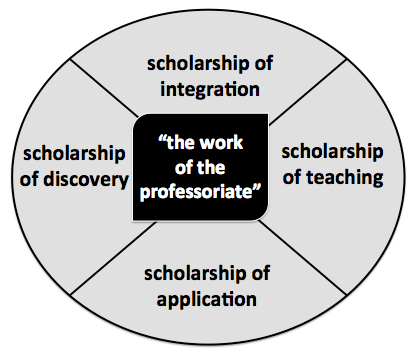Nancy Chick, Academic Director of the Taylor Institute, University Chair in Teaching and Learning and Teaching Professor at the University of Calgary
A key contribution of the Federation’s Approaches to Assessing Impacts in the Humanities and Social Sciences report is its acknowledgement that “Academic work has impacts beyond the initial actions or outputs of the researcher, including effects from teaching” (p. 13). Indeed, the professor of folklore studies sketched in one of the report’s case studies identifies “to strengthen and open the minds of students” as one of two goals for his scholarship (p. 12). His aim is probably familiar to many of us in the humanities and social sciences. He wants to contribute to a wider body of knowledge (his first goal), but on a more human level, the knowledge he wants to contribute to and ultimately mobilize is his students’.
This goal goes beyond the clichés of “students are our future.” As humanists and social scientists, we are most interested in human understanding, expression, action, interaction, and consequence. We take seriously the effects people have on each other, from impressions to words to actions to social institutions to cultural traditions to historical legacies. In this context, the acts of our teaching and (more importantly) our students’ learning take on greater significance, especially when we understand that “learning” is much more than what students do in a paper or on an exam — as suggested by our hypothetical folklore colleague.
Given this significance, and returning to the goal of demonstrating the impacts of our scholarship, we (like our folklore colleague) need “to better understand the experiences of our students.” We need to understand, assess and demonstrate the effects of our teaching on our students’ learning — with an appropriately complex definition of learning.
This effort is an area of scholarship in its own right, called the scholarship of teaching and learning (SoTL). In Scholarship Reconsidered: Priorities of the Professoriate (1990), Ernest Boyer proposed a broader explanation for the work that faculty do. In addition to the traditional notion of the scholarship of discovery, he pointed to three others with “separate, yet overlapping, functions”: “the scholarship of integration [e.g., interdisciplinary work]; the scholarship of application [e.g., community-based work]; and the scholarship of teaching” (p. 16). Later, scholars of teaching added “and learning” to make explicit the attention to our students’ learning and not just our teaching.
Our folklore colleague looks to the 16 rubrics from the Association of American Colleges & Universities (AAC&U) to assess his students’ learning related to his goal of strengthening and opening their minds. Perhaps he used the Intercultural knowledge and competence or Integrative learning rubric. And while he feels it’s important that “he is not himself an expert in assessing learning outcomes,” SoTL is grounded in the assumption that our disciplinary expertise is key in our work to understand, assess and demonstrate our students’ learning.
Our colleague, for example, is an expert in the many ways in which stories, beliefs, performances and other artifacts document the experiences of the individuals and communities that produce them. He is well equipped to bring his expertise to the work of SoTL and just needs the artifacts produced by his students to begin. He is primed to ask how artifacts like regular formative assessments (e.g., the minute paper, muddiest point), final ethnographic projects, think-alouds, or pre-/post-interviews document what’s going on in students’ minds. He could analyze such artifacts collected during the semester, and perhaps continue to collect relevant artifacts from some of the students throughout their folklore studies program. And what if he continued even well after graduation?
The Federation’s report acknowledges that “HSS scholarship has substantial impacts that are felt over long periods of time” (p. 7), making the ability to capture goals like “to strengthen and open the minds of students” within reach. Not simple, as most of our scholarship is messy, human stuff. This is the potential of the scholarship of teaching and learning, a vibrant, multidisciplinary, international field that has much to offer those interested in assessing impacts in the humanities and social sciences.
For more information on SoTL, see my online guide at http://sotl.ucalgaryblogs.ca/.
Après la publication du rapport de la Fédération intitulé Méthodes d’évaluation des incidences de la recherche en sciences humaines, nous avons demandé à d’autres membres du milieu de la recherche de nous faire part de leur point de vue sur les défis et les possibilités entourant l’évaluation des incidences de la recherche. Nous espérons que cette série de billets de blogue et notre nouveau rapport alimenteront un débat constructif au sein de la communauté des sciences humaines sur cet important sujet.

